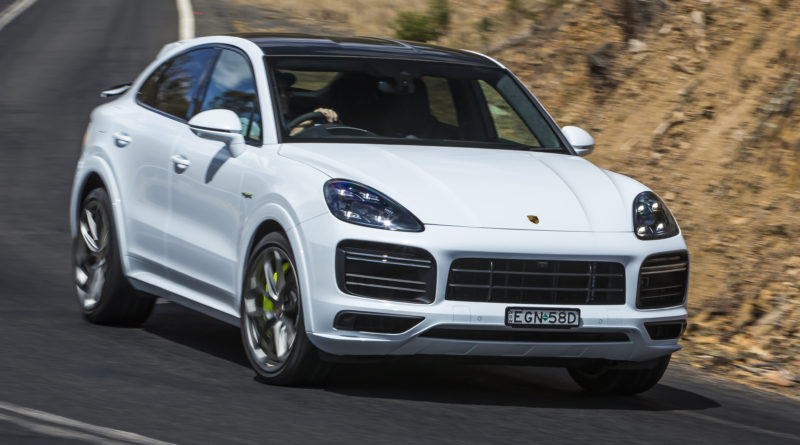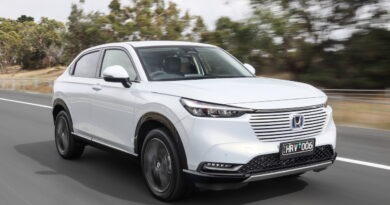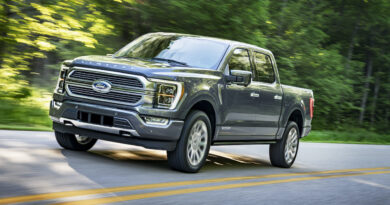Porsche Cayenne Turbo S E-Hybrid Coupe review
V8 punch with electric assistance makes for a brutally effective large SUV – at a price.
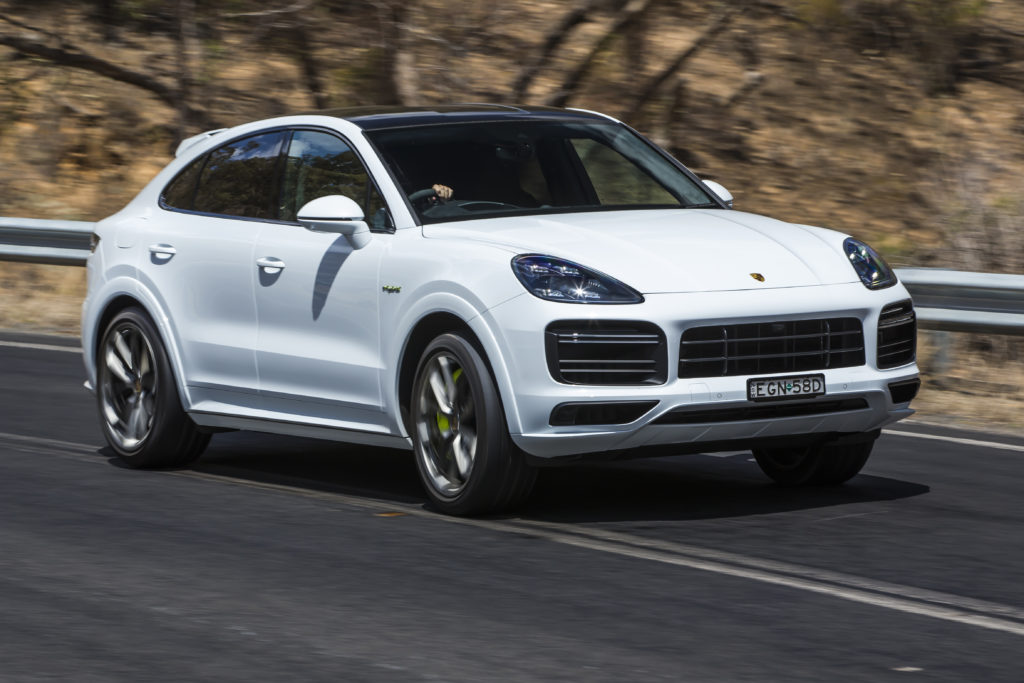
The Coupe body style is a new arrival to the Porsche Cayenne family, adding a sportier look at the expense of space.
The sleeker body has been squished 20mm lower, in turn stretching its length by 13mm. The rear wheel arches are also broader, although the overall vehicle width is identical to the regular Cayenne SUV.
While there are regular V6 and V8 Cayenne Coupe models available, the top of the range is the Turbo S E-Hybrid tested here.
As the name suggests, it’s a plug-in hybrid electric vehicle that teams old school V8 with modern electric propulsion.
Value
While the regular Cayenne kicks off from $116,600 the Coupe version starts at $128,000. The price premium brings the unique design, larger wheels (typically an inch bigger in diameter compared with the SUV), adaptive suspension and a panoramic glass sunroof.
By the time you get to the Turbo S E-Hybrid (bypassing the S and Turbo along the way) it’s a whopping $288,000. In Coupe guise that jumps to (ouch) $292,700.
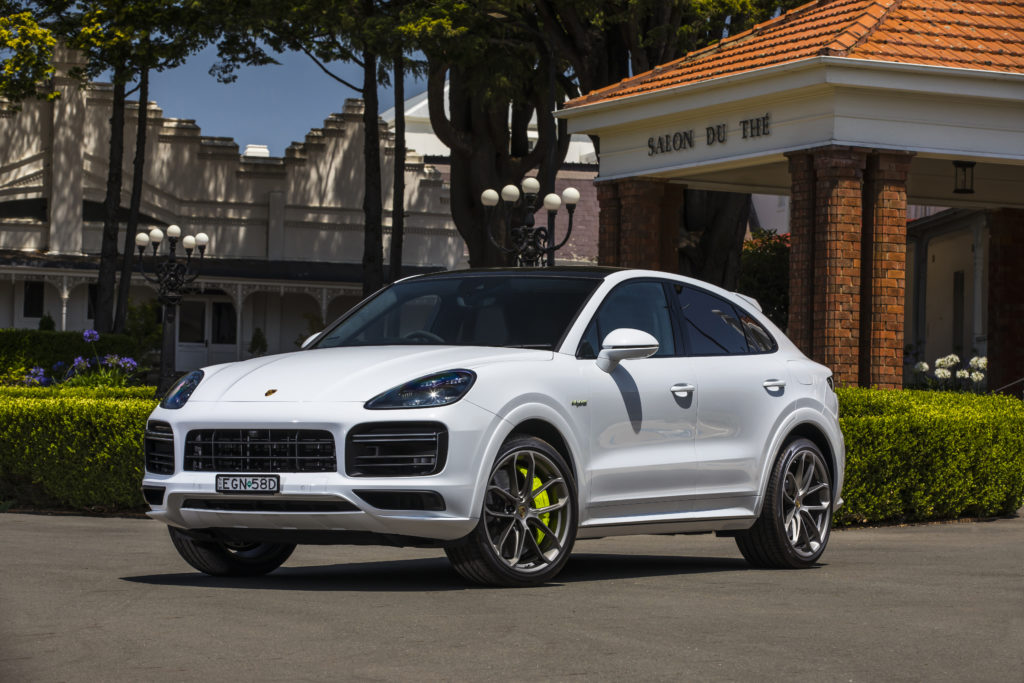
Included is adjustable height air suspension, tyre pressure monitors and sizeable 22-inch wheels, the latter chosen to accommodate the enormous braking system.
While there’s plenty of gear for the money – leather, Alcantara roof and touches, heated front and rear seats and steering wheel, smart key and a 14-speaker Bose sound system – there are also things that should be included on a luxury SUV. Active cruise control and the more advanced emergency braking system top that list (they’re an extra $4870).
In true Porsche style there’s an extensive list of options that can easily adds tens of thousands to the cheque you’ll be writing as you drive out of the dealership. Whether it’s more advanced driver assistance systems, design tweaks, a sports exhaust or better lighting there is a plethora of add-ons for customisation.
One ours was fitted with was the Lightweight Sport Package, which includes various design tweaks as well as a carbon fibre roof replacing the sunroof; it’s claimed to save 21kg, in turn lowering the centre of gravity, although in a car weighing north of 2.5 tonnes (2535kg) the dynamic improvements will be minimal.
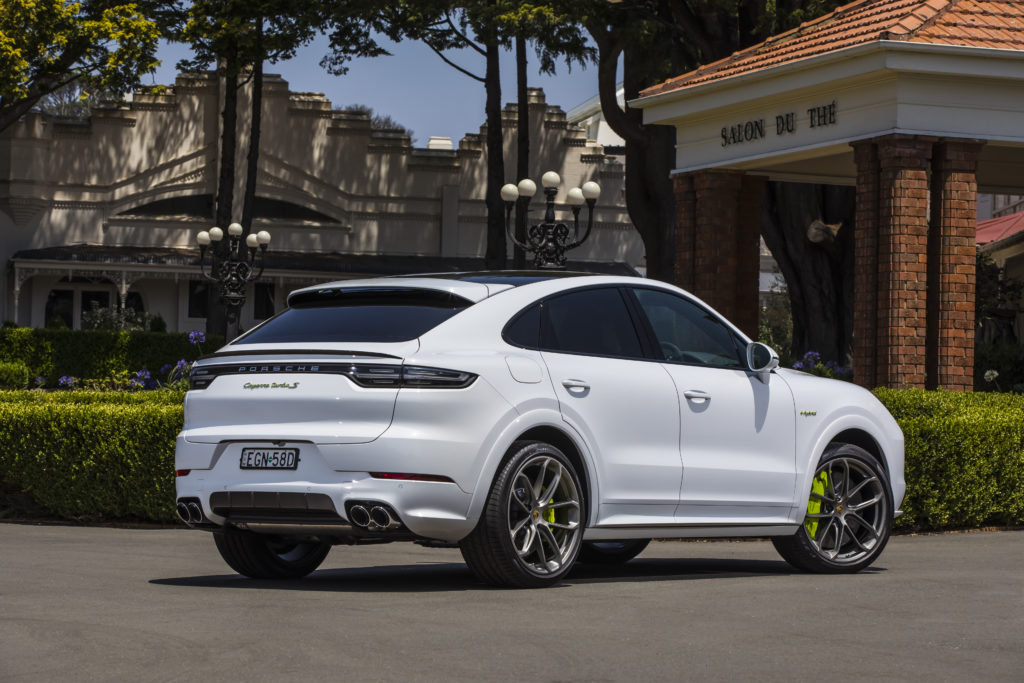
While Apple CarPlay is standard, Android Auto isn’t available, so those with anything other than an iPhone will need to upgrade to take advantage of the more advanced connectivity.
Inside
There’s no hiding from the 911 influence in the Cayenne Coupe – that’s a good thing!
The steering wheel includes a drive mode selector and grippy Alcantara wrapped around the rim.
And the instrument cluster has five circular dials, four of them customisable digital and the centre an analogue tacho housing a digital speedo. It’s a nice blend of tech and tradition, the PHEV reinforced with green highlights on the needles and battery charge indicator.
Those green highlights are splashed around the car, including the brake calipers and badging outside and ambient lighting throughout the cabin.
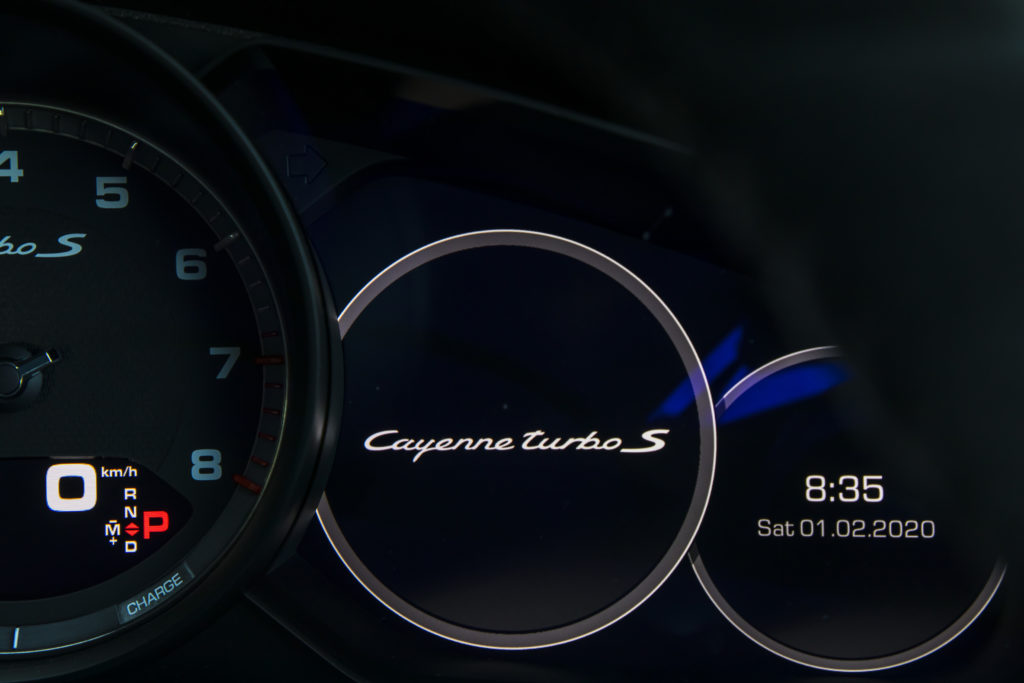
Space-wise Porsche has done a great job with the Coupe compared with the mainstream Cayenne SUV.
While rear headroom feels a fraction tighter, Porsche claims those in the rear are treated equally in the Coupe compared with their SUV cousins courtesy of a seat cushion that has been lowered slightly.
The biggest downside is the boot, which drops in capacity by 145 litres, although the 500L space is still thoroughly useful.
Performance and efficiency
Porsche pitches the Cayenne Turbo S E-Hybrid as the best of both worlds and that can be the case, provided you’re prepared to make some compromises.
There are six drive modes: E-Power, Hybrid Auto, E-Hold, E-Charge, Sport, Sport Plus.
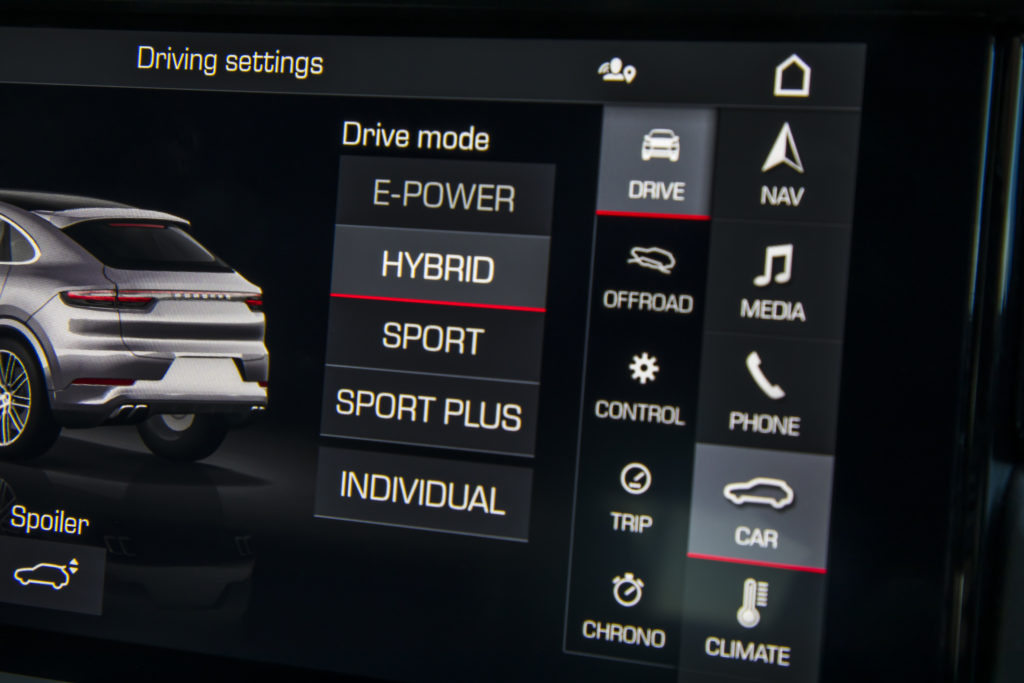
E-Hold runs the engine to maintain the current battery charge, while E-Charge tops it up by using the V8 engine as a generator. Neither is particularly useful in Australia, unless you want to make a silent entry after a long drive.
E-Power allows the car to be driven on electricity alone, but there’s always the back up of having the V8 there if you need a quick hit of additional punch.
The electric motor only makes 100kW and 400Nm, so it’s fine for keeping pace with traffic and cruising at 80 or 100km/h.
In E-Power there’s also a very different throttle feel thanks to a distinct stop part way through its travel. It’s like there’s a tennis ball stuck underneath, encouraging you not to push harder, at which point you’ll wake the V8.
But you won’t get close to the claimed 3.8-second time for the dash to 100km/h just on electricity.
For that you the 404kW and 770Nm of the twin-turbo V8, at which point things get fiery.
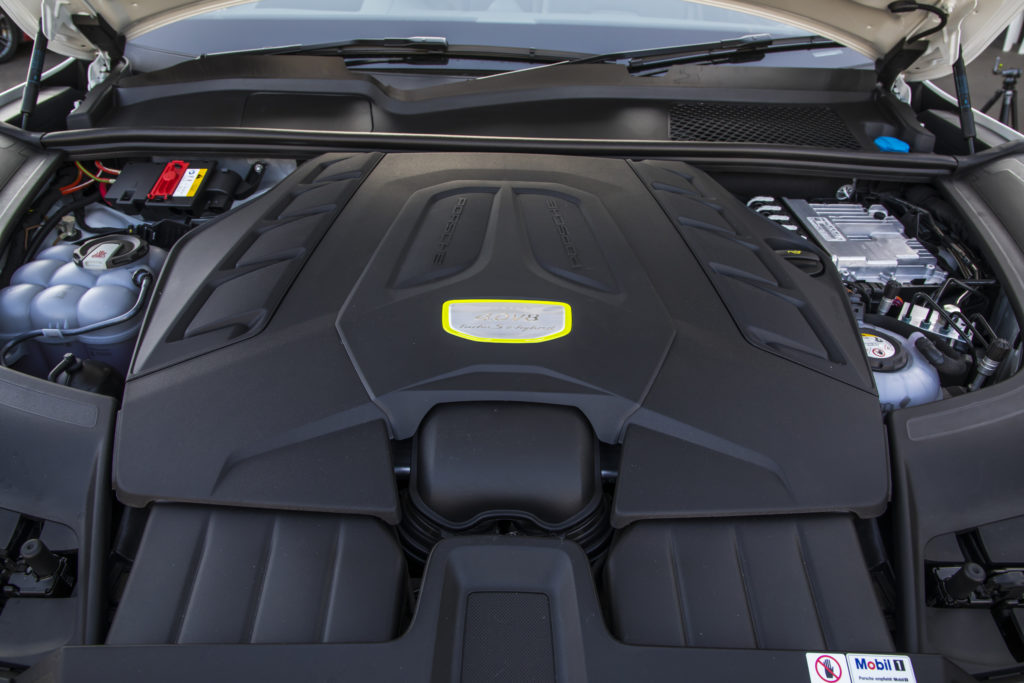
Even with more than 2.5 tonnes to shift it’s brutally effective at piling on speed.
The electric motor adds torque and pull lower in the rev range with the engine quickly adding to the equation.
Between them it’s never short of pace.
It can be economical too – and it can be thirsty.
Be more gentle in your throttle applications and you can use no fuel, instead relying purely on electricity.
The electric-only range is around 30-50km, so it’ll only be electric-only for shorter trips.
Or you can have more fun and bring premium unleaded into the equation.
The E-Hybrid mode is the best all-round compromise, allowing plenty of electric running with performance if you need it.
Sport and Sport Plus focus heavily on performance to the point where the V8 is always running, even when stationary at traffic lights.
It’s also easy to use 15 litres of fuel per 100km (or more) if you’re driving more aggressively.
Charging
The flagship hybrid of the Cayenne lineup makes do with a smaller fuel tank (75 litres versus 90 litres) and fills part of the space with a 14.1kWh lithium ion battery.
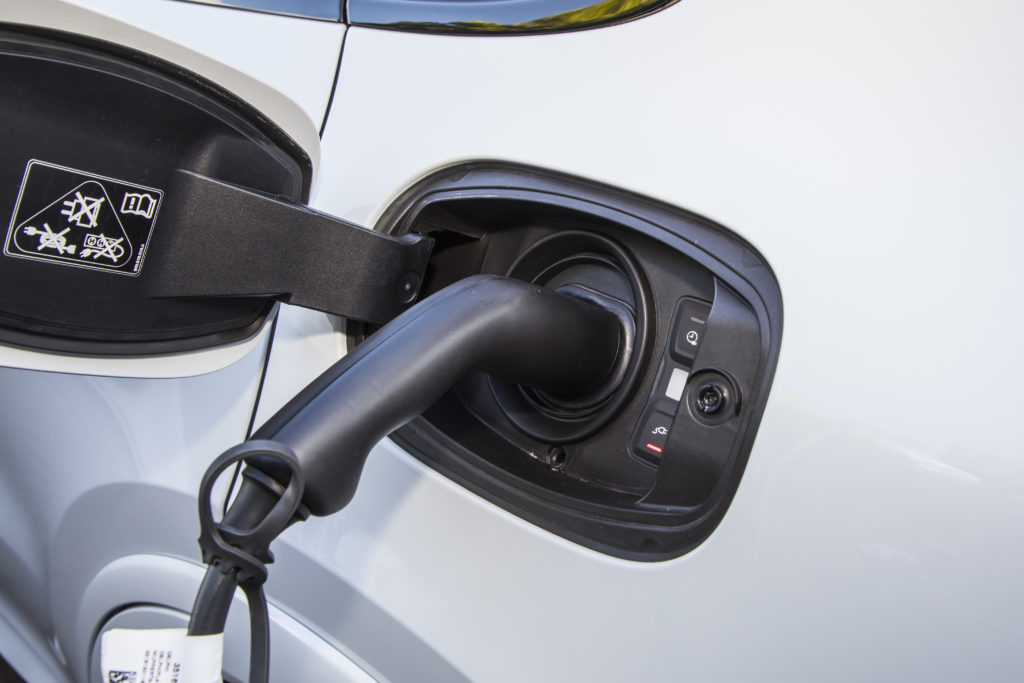
The battery can be charged by up 7.2kW of AC current only (there’s no DC charge capacity), something that will take around two hours.
If you’re using a 10A household plug the charge time will be closer to six hours.
Ride and handling
Big wheels and tyres are the start of a dynamic package that attempts to bend the SUV rules.
The wheels are 22 inches in diameter and have 285mm wide tyres up front and wider 315mm wide rear. It’s a heck of a lot of rubber and ensures the Cayenne Coupe digs in around corners.
Adjustable height air suspension with Active Suspension Management adds to the talent.
It’s the active stabiliser bars that are the most effective, almost instantly building torque to resist cornering lean.
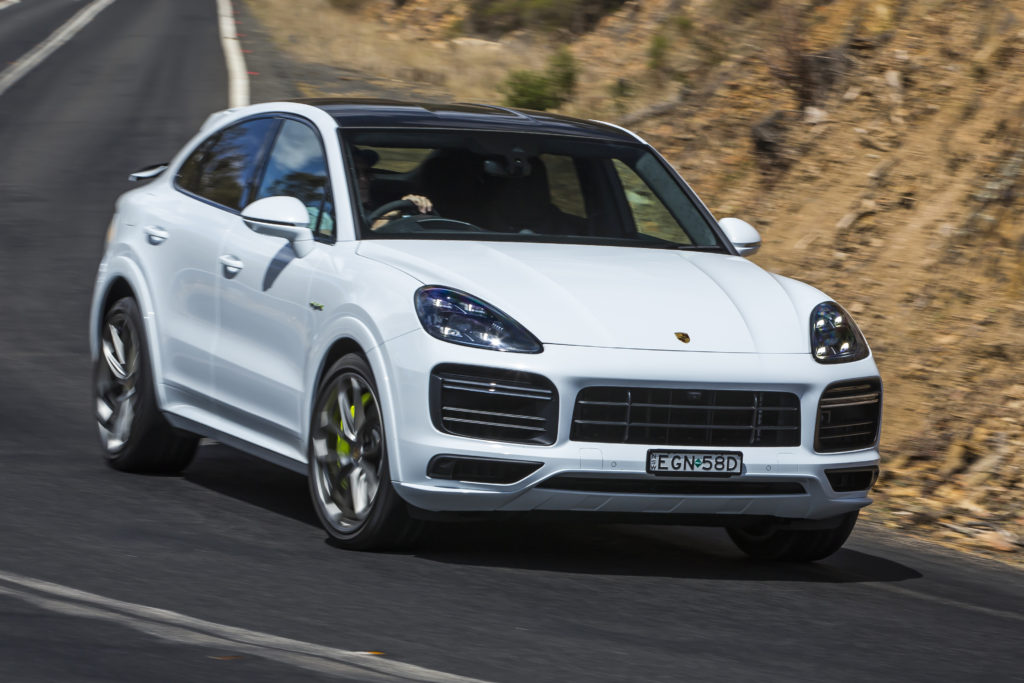
The Coupe stays incredibly flat through corners and it fires out of tight bends with genuine enthusiasm. While drive is sent to all four wheels, there’s a sporty flavour courtesy of more drive heading to the rear.
With such sizeable tyres it’s no surprise sharp edges can catch it out. And while the softer suspension settings are liveable, there’s inherent firmness that is in some ways a welcome reminder of the genes.
While it does a good job of masking so many kilos, ultimately you’re aware there’s a lot going on at ground level.
X-factor
Yep, it can tow up to three tonnes and do some basic off-roading, although the electrical system that is part of the hybrid system limits the recommended wading depth to 280mm, well down on the 500-530mm of other Cayenne models.
But, hey, who’s going to head off-road in $300K worth of Porsche?
Green brakes are to some extent what define the Cayenne Turbo S E-Hybrid.
If you want to boast about having bigger brakes the a Formula 1 car or even a V8 Supercar, then this is your machine. The front discs are a whopping 440mm in diameter and have 10-piston calipers grabbing them. Even the rear brakes are bigger than most, enormous 410mm rotors with four-piston calipers. And Porsche paints them all in lurid green so there’s no chance of missing them.
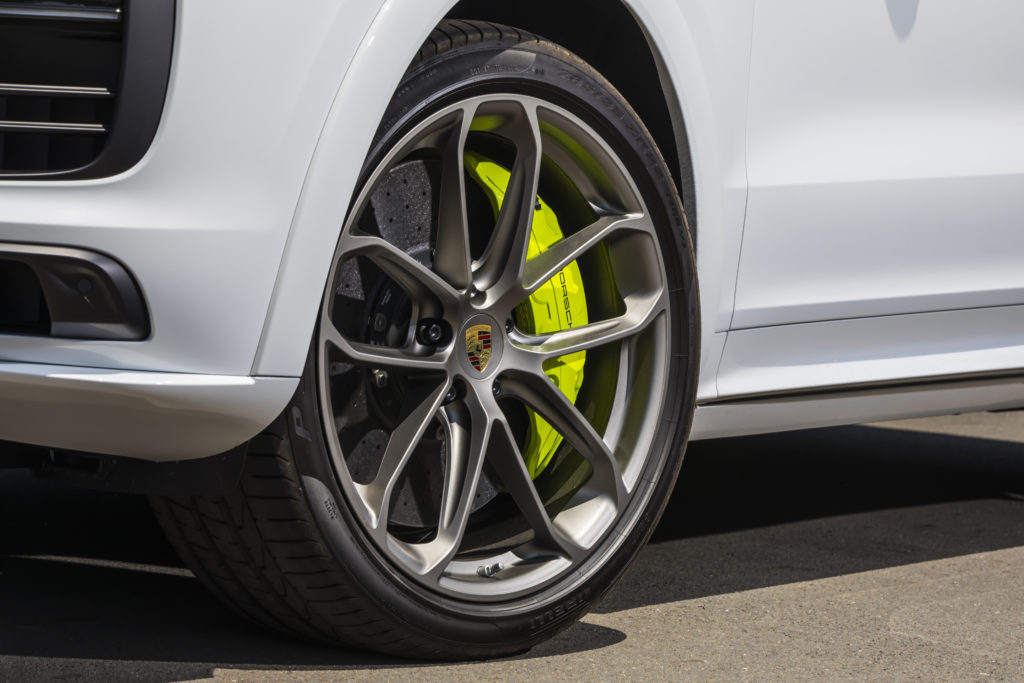
They’re fairly necessary, though, because the Turbo S E-Hybrid is a heavy beast, at 2535kg. Punching between corners or for those slowing from its 295km/h top speed it’ll put every millimetre of disc to the test.
Safety
The basics are there – including side airbag coverage front and rear and an active bonnet that raises to protect pedestrians – but there’s little in the way of whizz-bang tech more common on rivals.
The radar cruise control costs extra, for example, adding a more advanced auto braking system in the process.
And some of the trickier tech – such as the LED matrix lights that blank out other cars and highlight obstacles such as pedestrians – are part of that expansive list of options.
Verdict
The Cayenne Turbo S E-Hybrid brings enough Porsche goodness (by large SUV standards) with some useful electric tech – albeit at a price.
For such a lump of a machine it does amazing things through corners, while ticking the family car boxes.
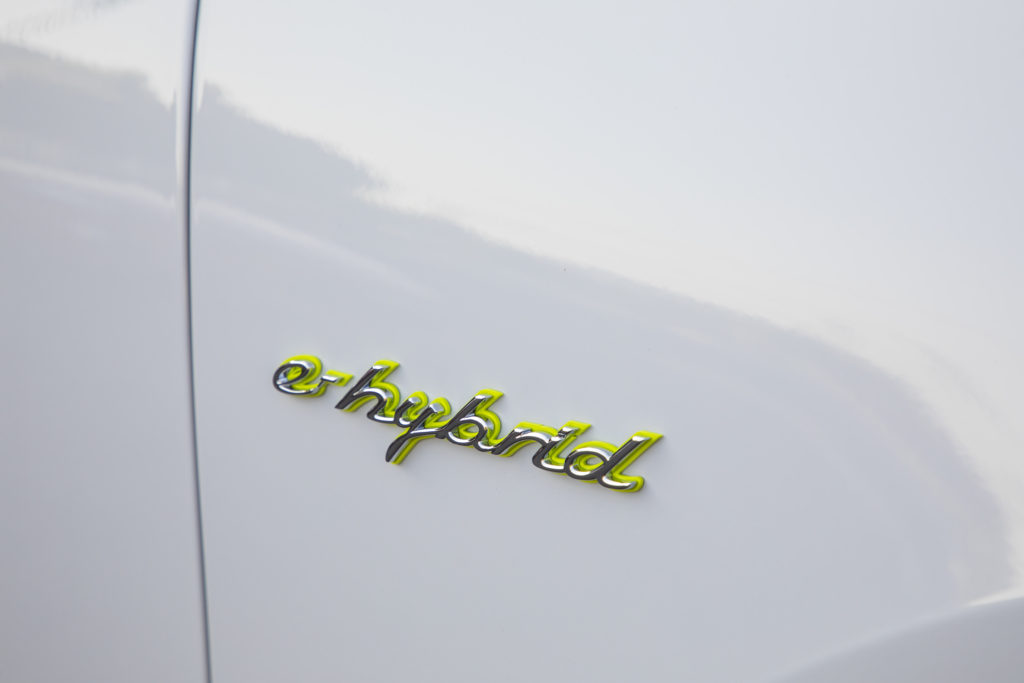
Ultimately its plug-in hybrid system is compromised by EV standards, as so many are. Using electric power it’s lugging around plenty of unused engine.
But when both V8 and EV are humming in harmony it’s an efficiently brutal machine. If that’s your thing.
PORSCHE CAYENNE TURBO S E-HYBRID COUPE SPECIFICATIONS
Price: $292,700
Warranty: 3 years, unlimited km
Battery warranty: 8 years/160,000km
EV type: PHEV
Motor/s: Single synchronous electric motor, 100kW/400Nm
Power/torque: 500kW/900Nm
Transmission: 8-speed auto
Fuel use: 4.4L/100km
Electricity use: 20.1kWh/100km (claimed)
Charger types: Type 2
Battery capacity: 14.1kWh
Claimed range: 23-40km (electric)
Maximum charging power AC/DC: 7.2kW/NA
0-100km/h: 3.8 seconds
Top speed: 295km/h

